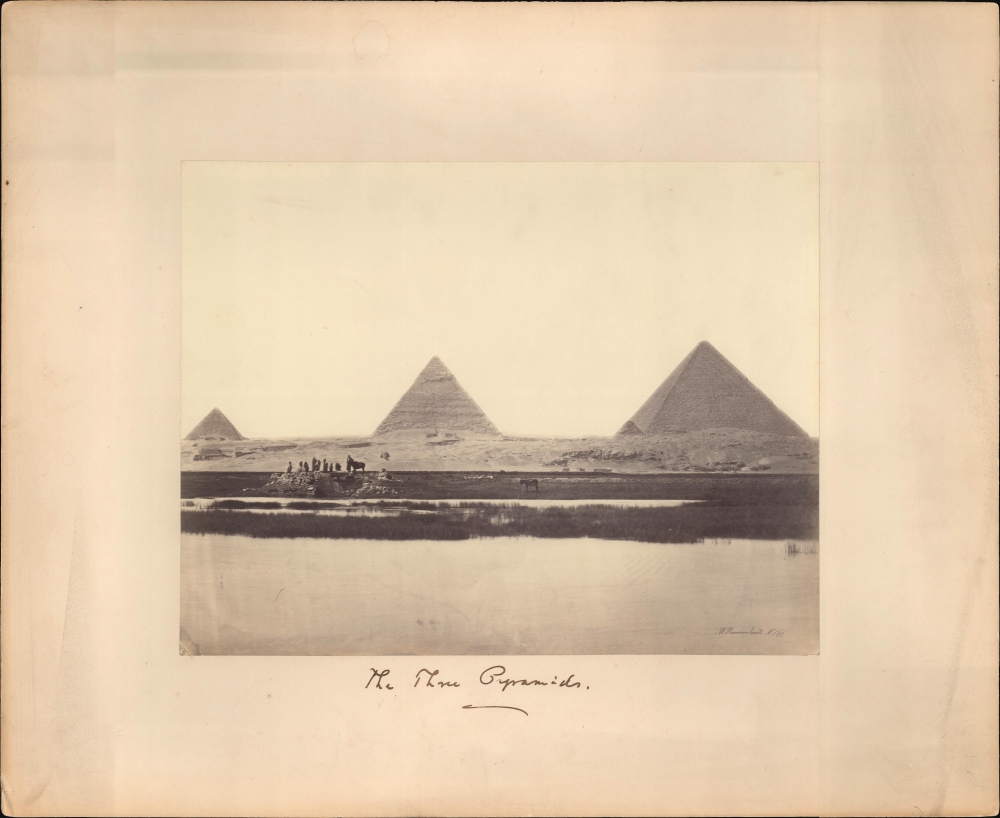1861 Hammerschmidt Albumen Silver Print Photograph: Great Pyramids of Giza, Egypt
ThreePyramids-hammerschmidt-1861
Title
1861 (undated) 14 x 17 in (35.56 x 43.18 cm)
Description
Provenance
These images were from the collections of Roswell Dwight Hitchcock (1817 - 1887). Hitchcock was a congregationalist minister and professor at Bowdoin and later at the Union Theological Seminary in New York. His ministry took him to Germany in the 1840s. Afterwards, he visited Italy and Greece in 1866, and in 1869 and 1870 he traveled to Egypt and Palestine. He was appointed president of the American Palestine Exploration Society in 1871, and vice-president of the American Geographical Society in 1880. Whether he acquired these before traveling to Egypt, there, or on his way back to America, is unknown.Publication History and Census
Scarce. We see a single other example of this photograph, located at the Nelson-Atkins Museum (2009.6.2).Cartographer
Wilhelm Hammerschmidt (March 3, 1822 - August 26, 1887) was a German photographer best known for his photographs of Egypt, Sudan, and Nubia. Hammerschmidt was born in Berlin. He lived in Berlin until about 1860, when he relocated to Cairo, Egypt, to open a photo studio. He offered a service whereby he would travel with tourists as a companion, taking both studio photographs and photos in front of Egypt's historic ruins. His travels in the country took him up the Nile to Abu Simbel in Upper Egypt and further to Nubia and what is now Sudan. He was a member of the Deutschen Photographischen Gesellschaft (German Photographic Society). His photos of Egyptian ruins were well received in 1861 at the Société Française de Photographie and in 1862 at the London International Exhibition of Industry and Art. Back in Egypt, he ran into trouble when attempting to photograph Islamic pilgrims on the Hajj, wherein he was attacked and injured. He returned to Berlin in 1863, oping a studio at Potsdamer Strasse 51, where he remained until 1883. He also briefly entered politics and served as a community leader from 1881 to 1882. Today, his photographs are considered his primary legacy, and are included in some of the world's most prestigious museums, including the Bibliothèque Nationale de France (BnF), the Getty Museum, and the Metropolitan Museum of Art. More by this mapmaker...

